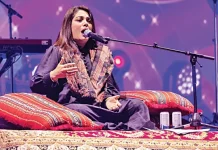
By: Ramesh Raja
Todays, on 1stNovember 2024, the festival of Diwali is celebrated in all over the world. Diwali, also known as Deepavali, is a vibrant and cherished festival celebrated widely in India and across the globe. Known as the “Festival of Lights,” Diwali symbolizes light over darkness, knowledge over ignorance and good over evil. With its roots in rich cultural traditions, Diwali unites people across various backgrounds.
The word “Diwali” originates from the Sanskrit dipavali, meaning “a row of lights.” Celebrated over five days during the Hindu lunar months of Ashvin and Kartika (October–November), each day holds unique customs, symbolizing prosperity, family bonds, and spiritual renewal:
- Dhanteras: Dedicated to Lakshmi, the goddess of wealth. Families clean and decorate their homes, believing it attracts prosperity.
- Naraka Chaturdashi (Choti Diwali): Celebrates Lord Krishna’s victory over Narakasura, symbolizing the defeat of darkness. Homes are decorated, and sweets are shared.
- Lakshmi Puja (Main Diwali Day): Families perform prayers seeking Lakshmi’s blessings for prosperity, celebrating with lamps, fireworks, and festive meals.
- Govardhan Puja (Padwa): Honoring the bond between husband and wife and symbolizing protection, commemorating Krishna lifting the Govardhan Hill.
- Bhai Dooj: Celebrates the bond between brothers and sisters, who exchange blessings and gifts.
Diwali’s Origins: Cultural and Seasonal Roots
Tracing back to the Indus Valley Civilization, Diwali was initially a harvest festival of Cotton and Rice crops. Ancient societies celebrated the season’s bounty, marking the shift from summer to autumn and the start of a new financial year for many business communities.
Now a days, the festival includes diverse cultural elements:
- Illumination: Homes and streets are decorated with lamps (diyas), representing light’s victory over darkness.
- Fireworks: Fireworks light up the sky, adding joy to the celebration.
- Feasts and Sweets: Traditional sweets like ladoos and barfis are shared, fostering community bonds.
- Rangoli: Colorful patterns adorn entrances, welcoming guests and prosperity.
Diwali’s Spiritual Significance Across Religions
For Hindus, Diwali honors key legends, such as Lord Rama’s return to Ayodhya and Lakshmi’s blessings. In Sikhism, it coincides with BandiChhor Divas, marking Guru Hargobind’s release, symbolizing liberation. In Jainism, it commemorates Lord Mahavira’s enlightenment, reflecting inner light. Some Buddhists, especially in Nepal, celebrate it as Emperor Ashoka’s conversion to Buddhism, symbolizing peace and compassion.
Diwali in Sindh, Pakistan
In Sindh, Diwali, the Festival of Lights, traces back to the ancient Harappa and Mohenjo-Daro civilizations, where themes of light, renewal, and community were celebrated. Today, this heritage endures in Sindh’s inclusive society, uniting people of all faiths—Muslims, Sikhs, Christians, and Hindus. Sites from the Indus Valley civilization, dating to around 2500 BCE, reflect a culture that shaped festivals like Diwali.
In cities like Karachi and Hyderabad, Diwali fosters interfaith dialogue and community events, with diyas, sweets, and rangoli celebrating Sindh’s legacy of unity. Local poets enrich the celebration by capturing its essence, making Diwali a time for creativity and reflection.
ڏِٺيڏِياري، سامونڊينسڙھسنباهيا،
وجهيو ور ونجهه کي، روئي وڻجاري،
ماريندئي مارِي، پرھ سور پرينءَ جو.
)شاه لطيف(
Look at the festival lamps, the sea is aflame,
Let us weep for the pain of separation,
We will strike and still bring forth the sun’s light.
ڪالھتوکيڏٺو مون ڏياريجيان،
شهر ڏيئاھيو ،روشنيھر دري
(شیخایاز)
Yesterday, I looked you like Diwali ,
The city was full of lights, illumination at every door.
خیرہوتیریلیلاؤںکی، ان سب سےکہہ دو
آجکی شب جب دیئےجلائیں، اونچیرکھیں لو
(فیض احمد فیض)
May good fortune come to your nights; tell all of them
Tonight, when we light the lamps, keep them high.
سنڌڙيءَ جي سينڌ ۾ رنگنڀري رات،
ھولي ۽ بارات، ٻئيسھيليونسونھن جون
(شيخ اياز)
In the fragrance of Sindh, the night is filled with colors,
Holi and wedding celebrations, both are beautiful.
عيد به ساڳي، ھولي به ساڳي،
پاڻٻنھي جي ٻوليبه ساڳي
مون وٽ تو لاءِ مان وڏو آ،
مذھبکان انسان وڏو آ
(بينا ابڙورو)
The Eid is the same, the Holi is the same,
The language of all of us is the same.
I have something significant for you,
Humanity is greater than religion.
مايوسين جي اونداھيءَ ۾،
تنھنجيمُرڪڏياريوانگي
In the darkness of despair,
Your smile is like the Diwali.
نيڻ عيدون ھجن، دل ڏياريھجي
روشنيروشنيسنڌ سـاري ھجـي
Let the eyes be Eid and the heart a Diwali.
Let there be light throughout the land of Sindh.
ڪڏھن عيد اڱڻ تي، ڪڏھنڏياري،
جرڪيسنڌ ساري، سدا هجي سوجھرو
Sometimes Eid in the courtyard, sometimes Diwali
Shimmering Sindh forever remains bright.
Actually, Diwali’s origins predate the Ramayana, symbolizing ancient societal conflicts of Aryans and Dravidians; which still exists in Scheduled Castes, Harijans, Dalits, and Adivasis. Diwali highlights different challenges, as laborers face economic hardships that limit their participation. Commodification contrasts with these struggles, emphasizing class divides.
True celebration calls for collective well-being and reflection on inequality.Media often focuses on affluent celebrationsbased on religious worships, overlooking 80% of the population, including Scheduled Castes, Harijans, Dalits, and Adivasis, whose rich traditions based on culture are rarely shown. This highlights economic inequality and limited recognition for Pakistan’s Hindu community. Political priorities often favor affluent Hindus, limiting broader representation. However, acknowledging these diverse celebrations is essential for a society that honors and respects the contributions of its Hindu minority.
Diwali is a celebration of unity, hope, and renewal. It transcends cultural and religious boundaries, encouraging all to embrace joy, reflect on virtues, and share in the universal triumph of light over darkness. Diwali invites us to appreciate our shared humanity, fostering a brighter, more harmonious world.
The author of this article, Engr. Ramesh Raja, is a Civil Engineer, visionary planner, PMP certified and literary enthusiast with a passion for art and recreation. He can be reached at engineer.raja@gmail.com

























